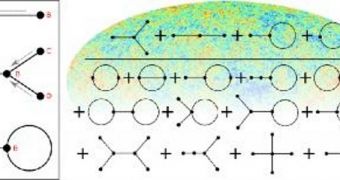In spite of their massive observation capacities, today's telescopes are still limited in the amount of data they can observe. There are structures obscured or partially out of sight and analyzing them is just as important to our knowledge of the Universe as looking at the way the Sun works. But the process can be extremely complex and so German researchers at the Max Planck Institute for Astrophysics have developed a new method for future studies. They created a basically designed series of rules for reconstituting incomplete and noisy image data, called information field theory.
This theory of spatial perception also establishes the precise conditions under which this series of concepts should be applied. According to its creators, the new system is heavily based on mathematical formulas that particle physicists use in their quantum physics-related calculations. Details of the innovation appear in the November 9 issue of the respected scientific journal Physical Review D, the team says. In the paper, the group reports that the system may also be used in areas as different as medicine and geology, where experts also need to look in places were existing measurement and analysis methods simply don't cut it.
“We add the missing data on the basis of the existing measuring points around the edge of the blind spot. These conclusions are more or less uncertain, of course. Our theory also calculates precisely how uncertain the statements are,” explains Torsten Ensslin. The scientist is based at the Institute on the Cosmic Microwave Background, in Garching, where he heads a research group. The CMB is the relic radiation left behind after the Big Bang, which still permeates the Universe. The ESA Planck telescope, launched earlier this year, has the main objective of analyzing these residues. The researcher adds that the method also compensates for errors in the calculations, which are unfortunately very probable.
“We have measuring problems especially when researching cosmic microwave radiation and the distribution of matter in the universe. These can be very well described by statistical field theories. Someone could have come up with the idea earlier, but quantum physicists do not usually concern themselves with signal recognition and electrical engineers do not read books about quantum field theory,” the expert concludes.

 14 DAY TRIAL //
14 DAY TRIAL //